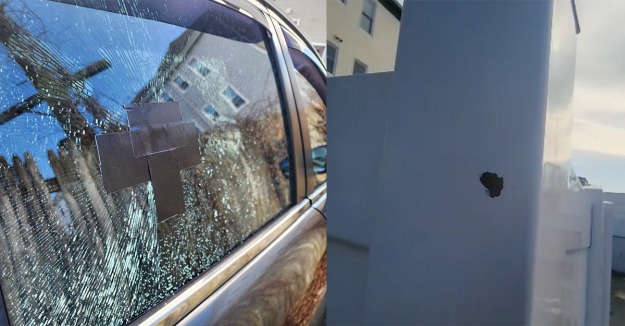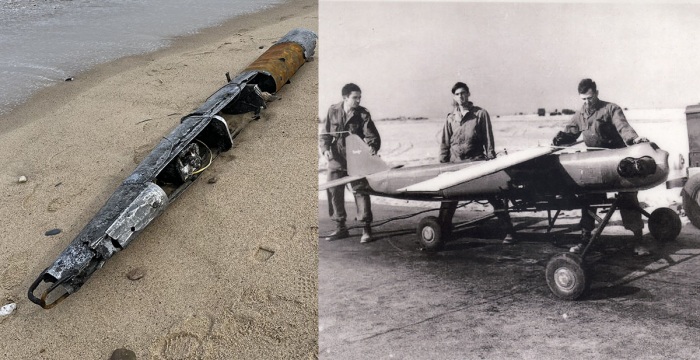During the month of April, the 43rd Lights for Peace flag to fly at the Fort Taber – Fort Rodman Military Museum honors the memory of PFC Frank F. Lewis, who served in D Company, 2nd Ranger Battalion and was killed in action on December 7, 1944, during WWII.
Lewis was born in Taunton, MA on March 25, 1910, son of the late Antonio Francisco Luiz and Maria Julia. Their last name was changed from Luiz to Lewis while emigrating to the United States from the Azores.
Frank was raised in the town of Fairhaven, then moved to New Bedford. According to his family, he was an avid soccer player and prided himself on staying fit. He worked as a truck driver for Dawson Brewery before enlisting in the military. He married his wife Helen (Sokol) on March 11, 1937, and their only child, a daughter named Eileen, was born on May 16, 1937.
Frank enlisted in the United States Army on October 6, 1943, at the age of 33. He was originally stationed at Fort Devens, MA, then trained at both Camp Croft, S.C. and Fort George Meade, MD. He eventually earned the rank of Private First Class (PFC) while serving in D Company, 2nd Ranger Battalion. He served overseas for a total of 8 months and 3 days before being killed in action during a hard-fought battle in Germany during WWII.
The 2nd Ranger Battalion was activated on April 1, 1943, and was active until October 23, 1945. According to rangerfamily.org, “the Rangers had to have the highest physical stamina and superior mental ability to perform as an outstanding fighting team in order to accomplish any given mission. They were skillfully trained and were proficient in all types of weapons, hand-to-hand combat, infantry tactics and many other skills necessary to be successful in war.”
Chris Piche, the grandson of Raymond Piche, who served alongside Frank Lewis, was quoted in a Standard-Times editorial reflecting on the Ranger battalion. “Dec. 7, 1944 was the third anniversary of the Day of Infamy, when Japan attached Pearl Harbor. In Europe it was also a rough day for the 2nd Ranger Battalion. They were knocking up against Hitler’s West Wall. The boys who had scaled Point du Hoc on D-Day were learning fast. In November, they helped punch through the bloody Hurtgen Forest in Belgium. Now they were ordered to take Hill 400 outside Bergstein, Germany.”
Piche referenced many local men serving in the Rangers including Frank Lewis, William Gervais, Gerald Bouchard and his grandfather, Raymond Piche. Through his research, Chris Piche summarized the battle explaining, “To take Hill 400 you had to cross an open field under mortar, machine gun and rifle fire. Bouchard was ordered to advance by himself to probe resistance, he was shot in the stomach. This lit a fuse in the 210 men of Fox and Dog Companies. They all rose up and charged ahead. Gervais fell crossing the field, but others stormed up the hill, capturing it. Lewis was hit late that day during a counterattack. Both he and Gervais died instantly from shell blasts. Piche, who was severely wounded, was hit by shrapnel the next morning and was transported across the English Channel.”
Piche describes the great heroism of Lewis and others in the Ranger Battalion. “New Bedford and vicinity should be proud of these men’s service. They all volunteered and gave their best to help beat back fascism. They were the sons of immigrants who heard the call of duty in the schools, mills and bars, during a time of global peril. They have the right to be called the Greatest Generation.”
Lewis’ family compiled hand-written letters from Frank to his wife, Helen, while he served in the military. These letters add a personal, human element to what Frank was experiencing while away from his family and training for war.
In a letter dated November 16, 1943, Frank explained that he had arrived at Camp Croft, S.C. after traveling 33 hours. “This camp is strictly an infantry training camp, and it has the reputation of turning out the best trained infantry troops in the country. Basic training is at least 17 weeks.”
Two months later, in a letter dated January 1944 he wrote, “They are increasing the number and distances of hikes which take place after we have drilled all day. We are now learning to fire the light machine gun. We went on a twelve-mile hike Friday night in the pouring rain. We have a good bunch of fellows with the usual sprinkling of wits and comedians which helps to make our stay here more pleasant.”
He later wrote, “This training is doing me a world of good, and I feel sure I can complete the course without much difficulty.”
Once completing basic training, Lewis went on to complete more training at Fort George Meade, MD before going overseas in April.
On April 2, 1944, Lewis wrote home to his wife, saying that he had arrived safely, but couldn’t say where. “We are not permitted to reveal our whereabouts or our activities.”
Then on May 10, 1944, his letter read, “I can’t tell you much about England or it’s people as I have not been to any town or city and these camps are usually placed in the middle of nowhere.”
Lewis wrote home on July 8, 1944, with some exciting news. “I am now with the 2nd Ranger Battalion. It is a good outfit and I hope I can stay with them.”
The last letter his wife Helen received was undated stating, “I am well and I hope you are all feeling the same. As you have probably guessed, I am somewhere in France. Don’t worry about me as everything is going along smoothly. Give my love to all the folks and give Eileen a hug and kiss for me. Lots of love to you and Eileen and best of luck. Your husband, Frank.”
PFC Frank F. Lewis was killed in action on Dec. 7, 1944, at the age of 34, a true American hero. He is buried at the Henri-Chapelle American Cemetery and Memorial, which is located two miles northeast of the village of Henri-Chapelle, Belgium.
August Farias, a New Bedford veteran, who traveled to Belgium and France years ago, to visit WWII battle sites, promised Frank’s grandson, Timothy, that he would visit the grave of PFC Frank F. Lewis. A Standard-Times article showed a picture of Farias standing before a simple white cross at Henri-Chapelle American Cemetery in Belgium. Farias was also given the flag from the soldier’s grave which he shared with Lewis’ grandson.
At the time of his death, Frank F. Lewis was survived by his wife Helen, his daughter Eileen Rezendes and her husband Paul; his brother Antone, Jr. and his three sisters: Anne Hendricks, Alice DeSimas and Julie Lewis; all now deceased. He is posthumously survived by his grandchildren: Steven Rezendes, David Rezendes, Chris Rezendes (and his wife Lisa), Timothy Rezendes (and his wife Kathy), and Andrew Rezendes, all of New Bedford.
Linda Ferreira, of Empire Ford of New Bedford, researches the life histories of area residents. American flags are provided by Empire Ford of New Bedford. Flags are raised by the staff at Fort Taber – Fort Rodman Military Museum. Those who would like to honor a local veteran in the future can contact Ferreira at lferreira@buyempireautogroup.com.
 New Bedford Guide Your Guide to New Bedford and South Coast, MA
New Bedford Guide Your Guide to New Bedford and South Coast, MA








This sstory really told it like it was! One of the finest tributes to an American Hero that I have read! Thank You!